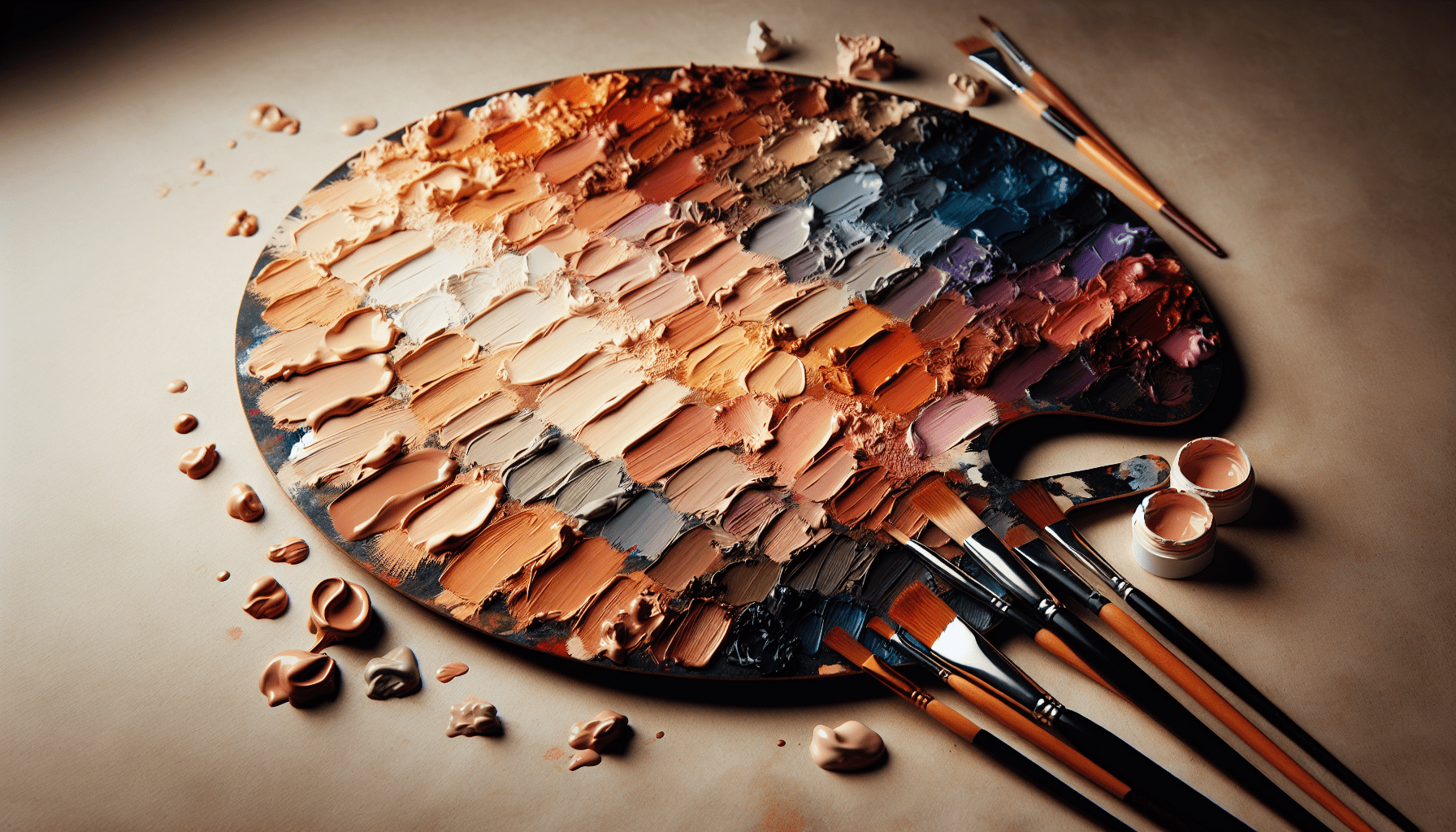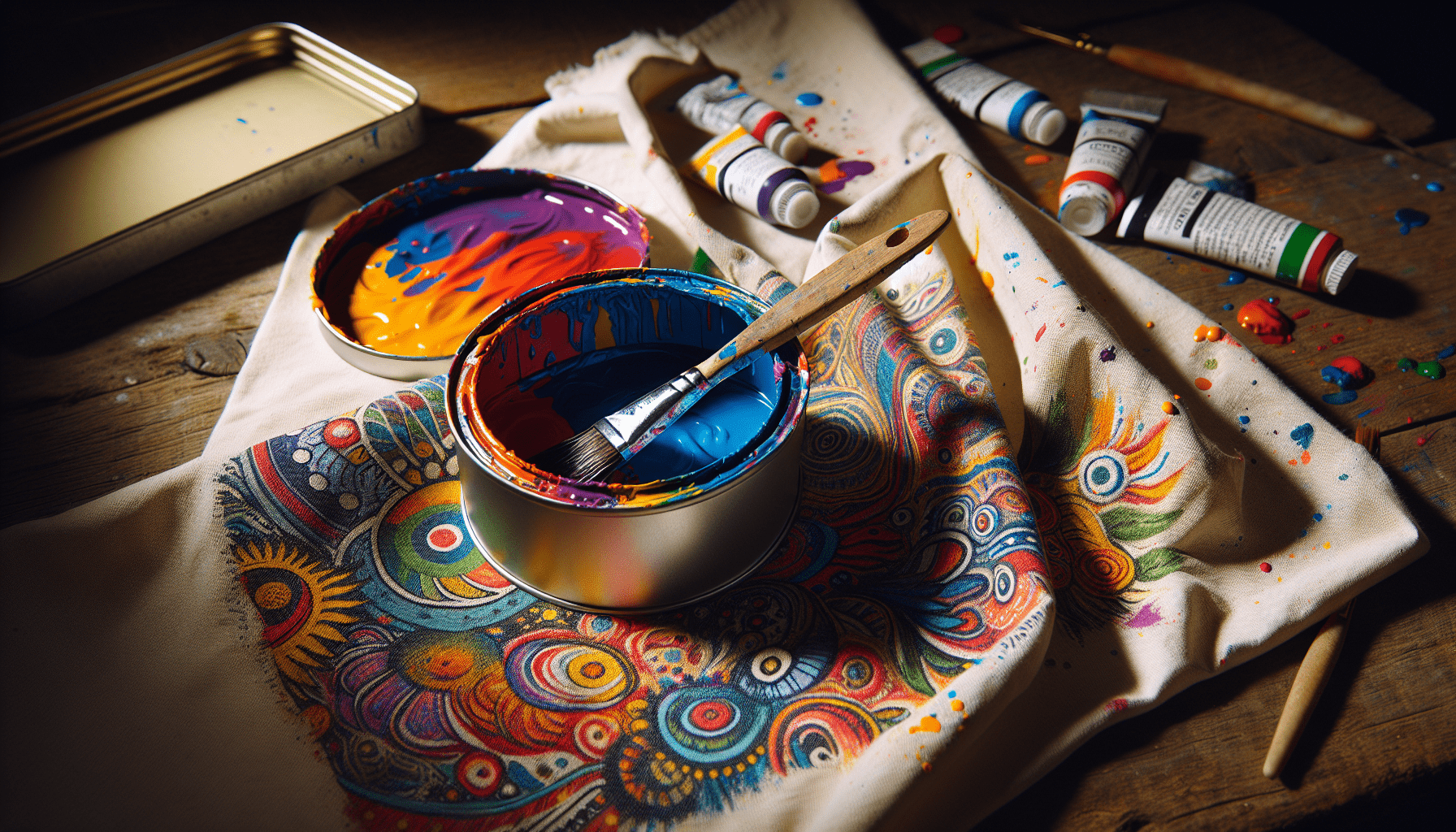Have you ever completed a beautiful piece of artwork using poster paint, only to find that it starts to fade or chip away over time? Knowing how to properly seal your poster paint creations can preserve their vibrancy and protect them from damage.
Why Seal Poster Paint?
Poster paint, also known as tempera paint, is widely used in art projects due to its vivid colors and its affordability. However, poster paint has a few drawbacks that are worth noting. Its water-soluble nature makes it susceptible to smudging, fading, and deterioration when exposed to elements such as moisture, dust, and sunlight. Sealing your poster paint artwork can provide a protective layer that extends its longevity and maintains its initial beauty.
Types of Sealants for Poster Paint
When it comes to sealing poster paint, you will find several options, each with its own set of advantages and disadvantages. Choosing the right sealant can depend on various factors, such as the medium you used, the surface of your artwork, and the desired finish. Below is a breakdown of different types of sealants.
| Type of Sealant | Description | Advantages | Disadvantages |
|---|---|---|---|
| Acrylic Sealer Spray | A fast-drying, clear acrylic spray that adds a protective layer over the paint. | Easy to apply, quick drying, available in varying finishes | Emits fumes, requires ventilation |
| Mod Podge | A water-based sealer, glue, and finish combined in one product. | Versatile, non-toxic, available in various finishes | May leave brush strokes |
| Polyurethane | A durable finish available in both oil-based and water-based varieties. | Very durable, resistant to chemicals and moisture | Can yellow over time (oil-based), longer drying time |
| Varnish | A traditional sealer used in fine art, comes in gloss, satin, and matte finishes. | Classic finish, highly protective | Longer application process, strong odor |
| Gel Medium | A thick, acrylic medium that can be used as a sealer. | Adds texture, can mix with paint for various effects | Takes longer to dry |
Acrylic Sealer Spray
Acrylic sealer sprays are among the most popular and convenient options for sealing poster paint. These sprays come in various finishes, including matte, satin, and gloss, allowing you to choose the one that best complements your artwork.
To use an acrylic sealer spray:
- Place your artwork on a well-ventilated area or take it outside.
- Shake the spray can well before use.
- Hold the can about 12 inches away from the surface and spray in a steady, even motion.
- Allow the first coat to dry completely before applying additional coats if needed.
Mod Podge
Mod Podge is another versatile and user-friendly option that serves as a glue, sealer, and finish all in one. It is available in several finishes, including matte, satin, and gloss.
To use Mod Podge:
- Use a clean, soft brush to apply a thin layer over your dry poster paint.
- Brush in smooth, even strokes to minimize streaks.
- Allow the sealer to dry completely—usually within an hour.
- Apply additional coats if necessary, allowing each layer to dry before the next.
Polyurethane
Polyurethane is a very durable finishing option available in both water-based and oil-based formulas. It’s particularly effective for heavy-duty projects.
To use polyurethane:
- Stir (do not shake) the can to avoid air bubbles.
- Use a clean brush or sponge to apply a thin layer.
- Allow the first coat to dry completely before sanding lightly with fine-grit sandpaper.
- Apply additional coats as needed, sanding lightly between each coat.
Varnish
Varnish is a traditional and highly protective option commonly used in fine art. It is available in gloss, satin, and matte finishes.
To use varnish:
- Stir the varnish gently to avoid introducing bubbles.
- Use a high-quality brush to apply an even coat over your artwork.
- Allow ample drying time between coats to achieve the best results.
- Apply additional coats if needed, sanding lightly between each one.
Gel Medium
Gel mediums are thick and can also be beneficial as a sealer, adding texture and volume to your artwork.
To use gel medium:
- Scoop a small amount onto a clean palette.
- Use a palette knife or brush to spread a thin, even layer over your poster paint.
- Allow it to dry completely.
- Apply additional layers for greater protection or texture.

Best Practices for Sealing Poster Paint
Sealing poster paint art requires some preparation and attention to detail. Follow these best practices to achieve optimal results and ensure the longevity of your artwork.
Preparation
Prepare your workspace and materials to make the sealing process smoother and more effective.
- Clean Your Surface: Ensure your artwork is dry and free of dust and debris. A soft brush or cloth can help remove any particles.
- Ventilation: If you’re using products like acrylic sealer spray or varnish, work in a well-ventilated area or outdoors to avoid the inhalation of fumes.
- Protect the Surroundings: Place a protective layer such as newspaper or a drop cloth under your artwork to catch any drips or overspray.
Application Technique
Applying a sealant correctly is crucial for achieving a professional-looking finish.
- Multiple Thin Coats: It is better to apply multiple thin coats rather than a single thick coat. This avoids drips and ensures even coverage.
- Drying Time: Follow the manufacturer’s recommendations for drying times between coats. Rushing the process can result in a tacky or uneven finish.
- Maintain Consistency: Whether you are brushing on Mod Podge or spraying an acrylic sealer, aim for smooth, consistent application strokes to avoid streaks or bubbles.
Troubleshooting Common Issues
Even with careful preparation and application, issues can arise during the sealing process. Here are some common problems and how to address them.
| Issue | Possible Cause | Solution |
|---|---|---|
| Streaks or Brush Marks | Uneven application of sealer | Apply thin, even coats and allow each layer to dry thoroughly |
| Bubbles in the Finish | Stirring or shaking the sealant too vigorously | Stir gently to avoid creating bubbles, use a fine brush |
| Sticky or Tacky Finish | Inadequate drying time between coats | Allow more time for each coat to dry completely |
| Yellowing (with oil-based sealants) | Natural aging of oil-based products | Use water-based polyurethane or acrylic sealer |
| Dust or Debris in Finish | Dusty environment | Work in a clean, dust-free area and cover drying artwork with a clean cover |
How to Fix Mistakes
If you encounter any issues, there are ways to correct the mistakes without starting over entirely.
- For Streaks: Lightly sand the affected area with fine-grit sandpaper and apply another thin coat.
- For Bubbles: Pop the bubbles with a fine needle and sand the area lightly before reapplying the sealer.
- For Tacky Finish: Allow additional drying time, apply a thin, even coat of sealer, and let it cure completely.

Specialized Techniques
In some cases, you may want to use specialized techniques to enhance your sealed poster paint artwork.
Decoupage Technique
Decoupage is the art of decorating an object by gluing colored paper cutouts onto it in combination with special paint effects. Mod Podge is often used for this technique.
- Apply a layer of Mod Podge over your poster paint artwork.
- Place decorative elements (such as paper cutouts) onto the wet Mod Podge.
- Once positioned, apply another layer of Mod Podge over the top, encapsulating the cutouts.
- Let it dry thoroughly and apply additional coats as needed.
Mixed Media
Combining different art forms can add depth and interest to your poster paint projects.
- Start by creating your primary artwork with poster paint.
- After it dries, use other materials like ink, watercolor, pastels, or even digital prints to add texture and complexity.
- Seal the entire piece using your preferred method to ensure all components are protected.
Texture Enhancement
You can also use gel mediums to add texture and dimension to your artwork.
- Apply a thick layer of gel medium to desired areas of your artwork using a palette knife.
- Use various tools like combs, brushes, or even your fingers to create textures and patterns.
- Allow the gel medium to dry completely before sealing with an acrylic sealer or varnish.
Long-Term Care and Maintenance
Sealing your poster paint artwork is only the first step in preserving it. Long-term care is essential for maintaining its appearance and durability.
Display Considerations
Where and how you display your art can greatly influence its longevity.
- Avoid Direct Sunlight: UV rays can fade colors over time.
- Temperature and Humidity: Keep your artwork in a stable environment with controlled temperature and humidity to avoid cracking or warping.
- Frame Protection: Consider framing your sealed artwork under glass to add an extra layer of protection.
Cleaning and Dusting
Even sealed artwork will require occasional cleaning.
- Soft Brush: Regularly dust your artwork using a soft brush to prevent the buildup of dirt and grime.
- Moist Cloth: For more stubborn dirt, use a barely damp, lint-free cloth to wipe the surface gently.
- Avoid Harsh Chemicals: Never use abrasive cleaners or chemicals that might damage the sealant.
Periodic Re-Sealing
Depending on the environment and the type of sealant used, you may need to reapply a protective layer periodically.
- Assess Condition: Regularly inspect your artwork for signs of wear, such as fading or chipping.
- Light Sanding: Lightly sand the surface before reapplying a fresh coat of sealant to ensure better adhesion.
- Follow Original Sealing Method: Use the same type of sealant initially applied for consistency.
Conclusion
Sealing poster paint artwork is an essential step in preserving its beauty and ensuring its durability. By choosing the appropriate sealant and applying it correctly, you can protect your creative masterpieces from damage and extend their lifespan. Whether you opt for an acrylic sealer spray for a quick and convenient solution or a traditional varnish for a classic finish, taking the time to seal your work will pay off in the long run. Follow the best practices and troubleshooting tips provided in this guide to achieve professional results and maintain the integrity of your artwork for years to come.



